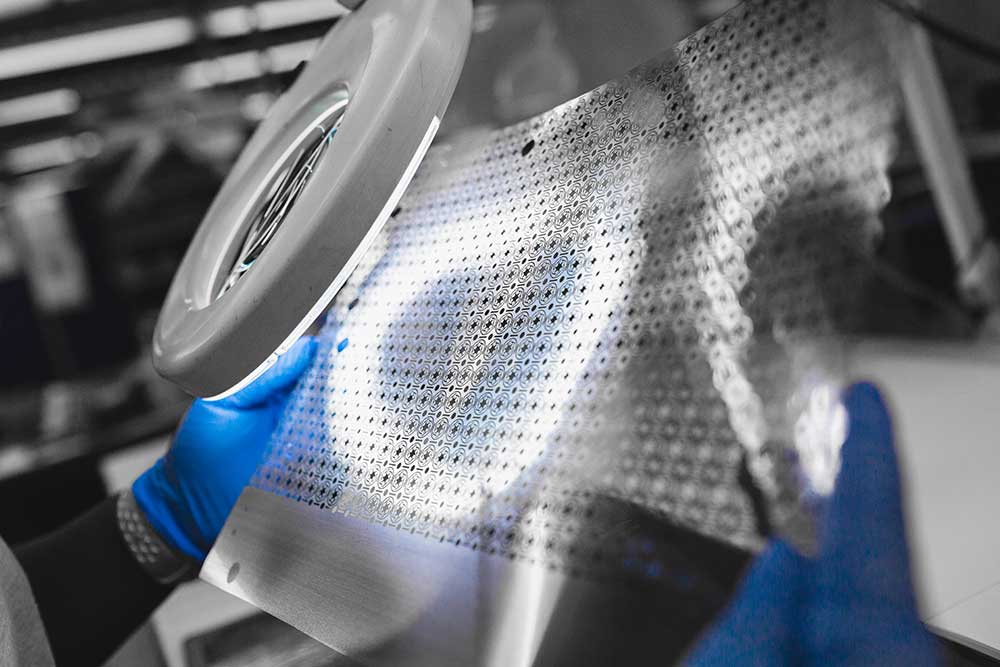Chemical etching uses chemicals to remove unwanted metal. It is economical and more flexible than other methods, which makes it suitable for prototypes as well as high production runs.
What is Chemical Etching Process?
Chemical etching sounds like a complex process. However, the question “what is chemical etching?” can be answered by breaking it down into relatively simple steps.
These are:
- Cleaning
- Laminating
- Exposing
- Developing
- Etching
- Stripping
The beginning material, known as the substrate, is cleaned and then laminated with photoresist. The photoresist is exposed to UV light and the pattern is developed. Etching chemicals are applied. These remove any unprotected metal. Stripping then removes the photoresist. The end result is a part that has no burrs or heat or pressure related stress points.
What are the Benefits of Chemical Etching?
Compared to other machining methods, including stamping and laser cutting, chemical etching has some benefits. It can be used when close tolerances are desired. Chemical etching tolerances are normally ±10% of the thickness of the material, with the lowest tolerances being ±0.025 mm.
Some types of machining require expensive tooling that makes it uneconomical for smaller runs or those that require a quick turnaround time. Chemical etching is ideal for these situations.
It also works well for complex or layered parts, round holes, and straight edges. Since chemical etching produces no tool marks or burrs, it’s suitable for aesthetically pleasing parts as well.
What is Chemical Etching Used For?
Most metals are suitable for chemical etching. These include stainless steel, aluminum, copper, and nickel alloys. It’s frequently used in many industries, including aerospace, automotive, medical, and electronic industries.
Electronic components commonly produced with chemical etching include lead frames, heat sinks, and flexible circuits. Lancets and scalpels are manufactured for the medical profession. Speaker grilles and springs are often produced for the automotive industry. Aerospace applications include large aircraft components and missile skins.
When Should You Use Chemical Etching?
Chemical etching is very flexible, allowing it to be used for many processes. It is ideal in most processes where a small precision amount of material needs to be removed. It is cost-effective for complex patterns or those with layers. The quick turnaround time makes it effective for projects when a short deadline needs to be met, allowing a project to go from concept to production in a matter of days. The chemical etching process can be largely automated, which eliminates human error from many steps in the process.









